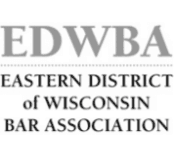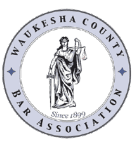Recent Blog Posts
Increasing use of facial recognition technology in law enforcement raises concerns, P.1
An important issue to explore in any criminal defense case is whether law enforcement did their job properly, whether they followed the rules, procedures and protocols to which they are bound. These rules are in place not just to ensure uniformity of procedure, but also to ensure criminal suspects’ legal rights are protected and to uphold the integrity of the criminal process.
The technology used in law enforcement is, of course, continuously developing and it typically takes awhile for the law to catch up to emerging policing technologies. An example of this is the 2001 U.S. Supreme Court case, Kyllo v. United States, which ruled that police must obtain a search warrant before using a thermal imaging device on a private home. Prior to the ruling in that case, the technology had been used in law enforcement for a number of years, but it took time for the legal system to clarify the legality of the technology in the context of constitutional law.
One technology which has recently increased in law enforcement across the country is facial recognition technology. Facial recognition, as it is currently practiced, involves the use of computer software to match the faces of criminal suspects with images in a database. The software, according to a recent report coming out of Georgetown University, is currently used in some form in 16 states, including Florida.
Increasing use of facial recognition technology in law enforcement raises concerns, P.2
Previously, we began looking at the topic of facial recognition technology and its increasing use in law enforcement. As we noted, the technology is used here in Florida. As the Georgetown report we mentioned last time makes clear, there are concerns with the use of the technology. For one thing, police have easy access to photo databases and often aren’t monitored to ensure there is no abuse.
Here in Florida, police and FBI officers are not required to have reasonable suspicion to run a facial recognition search, and searches are not audited for potential abuse by law enforcement agents. From a defense perspective, this is concerning, and not only because of the potential inaccuracies of the technology. Law enforcement could potentially use the technology to track criminal suspects on questionable bases, such as race, religion or political affiliation. They could also use the technology for purely personal purposes, violating individuals’ privacy.
Interesting points about drunk driving in Wisconsin
Drinking and driving is a serious problem because it is fully preventable if drivers don't get behind the wheel after drinking alcohol. With the impacts of this issue in mind, state legislators came up with some very strict penalties for drunk driving.
It is imperative that all drivers take the responsible path and find another way home after drinking. If this doesn't happen, you might find yourself facing criminal charges. Here are some points to know about drunk driving in Wisconsin:
Blood alcohol concentration
There are a few different factors that determine the legal limit of blood alcohol concentration for drivers. If a driver is under the legal drinking age, 21 years old, there can't be any traceable alcohol in the blood. People who are 21 and aren't commercial operators have a legal limit of .08 percent. If the person is a commercial operator, the limit is .04 percent. A person who has three or more operating while intoxicated convictions has a BAC limit of .02 percent.
Is the War on Drugs just modern Prohibition?
The so-called War on Drugs has criminalized drug use in the United States. Even so, drugs continue to be common. Some have compared it to Prohibition and the failed Eighteenth Amendment.
Prohibition was simply the banning of alcohol. Many of the same reasons for Prohibition are used for the War on Drugs: increasing public health, lowering crime rates and the like.
However, Prohibition failed completely. After only a couple of years, people were drinking anywhere from 60 to 70 percent as much alcohol as they had been before, so there wasn't a very good decline in use. Moreover, illegally produced alcohol often had a lower quality and a higher potency, so overdoses and alcohol poisoning were common.
On top of that, Prohibition created a criminal empire centered around the production and distribution of illegal alcohol. Crime went up and corruption flourished.
Plus, the banning of alcohol pushed some people to other drugs. Instead of drinking, they started using cocaine and opium.
Is there ever a time when drunk driving is legal?
The law in Wisconsin is exceedingly clear. Individuals who have a blood alcohol content beyond .08 percent cannot legally operate an automobile on the road. In fact, they can't even sit in the driver's seat while drunk with the vehicle pulled over on the side of the road without running the risk of getting arrested for a DUI. All that said, many drivers are surprised to hear that there are certain exceedingly rare circumstances in which it is actually legal to driver while intoxicated.
Before we discuss some examples of these circumstances -- when it's legal to drive drunk -- readers should be warned: This is not something to do on purpose, and it only applies to rare and emergency situations.
Here are two situations in which a driver could theoretically drive drunk and get away with it:
The driver is being threatened: Imagine someone was threatening a driver's life and forcing him or her to drive drunk. Maybe it's a husband, boyfriend, wife, girlfriend or lover. Maybe it's an abusive boss. Whatever the situation, the driver is fearful of his or her life or safety because someone is threatening and coercing the driver to operate a vehicle while intoxicated.
WalletHub analysis ranks states according to strictness in addressing DUI
Drunk-driving, as readers know, is differently regulated by the states such that the consequences of DUI charges vary depending on where the case occurs. While every state, it seems, holds reduction of drunk-driving as an important goal in principle, some states focus more on criminal penalties in battling the problem than others.
States can focus their efforts in a number of areas in the fight against drunken driving, though, not just with respect to criminal penalties. A recent analysis by Wallet Hub actually ranked the states according to their overall strictness when it comes to addressing the problem of drunken driving. The survey looked at a number of parameters in making the evaluations, including those relating criminal penalties and prevention efforts.
Among the criminal penalties evaluated were: minimum jail times and fines for a first and second conviction; when a DUI charge becomes a felony; the length of time a DUI may factor into penalties for a new DUI; whether additional penalties are imposed for a higher blood alcohol concentration; and whether states impose penalties for child endangerment. Also considered were: ignition interlock requirements; administrative license suspension; whether vehicles are impounded after a DUI arrest; whether sobriety checkpoints and “no-refusal” initiatives are used, and whether alcohol abuse assessments or treatment are mandatory.
Madison men accused of drug and weapons-related crimes
Police arrested two men in Madison, Wisconsin last week on drug and weapons-related charges. Allegedly, the apprehended men were associated with a north Madison home, where authorities seized thousands of dollars of cash, narcotics and firearms.
The arrests happened in the wake of a long-term drug investigation that resulted in three searches of two north Madison residences and a storage locker last Tuesday. Police claim that they seized cocaine, heroin, $12,500 in cash and five guns as a result of their searches. Allegedly, the guns that police found during the search included an AR-15, an SKS 7.62 rifle, two .44-caliber handguns and a .22-caliber assault rifle.
The men were not in either of the residences at the time of the search and seizure operations. However, police later found the men and arrested them after chasing each on foot. The arrested men included a 38-year-old man from Madison and a 34-year-old man from Chicago. The 38-year-old was charged with cocaine delivery, heroin delivery and resisting arrest. The 34-year-old was charged with party to the crime of heroin delivery and resisting arrest.
Making sense of drug possession laws
Depending on who you ask, the so-called war on drugs has been either ineffective or a complete disaster. Indeed, attitudes about drugs seem to be changing in the country with medical marijuana becoming the norm and recreational pot find support in several states. However, drug possession charges can be complicated in that they can be governed and prosecuted at both the state and the federal level. Laws and the ways they're enforced can vary from one state to another also, which makes defending yourself against charges even more confusing.
To boil it down to its most basic part, a drug possession charge must have two elements: the person had to know that the substance was controlled and had to knowingly possess it. The law generally divides possession into two types: possession for personal use and possession with the intent to distribute. It's an important distinction because the penalties can be at opposite ends of the spectrum. Simple possession could mean a fine whereas possession with intent could land you in prison for a long time.
Man accused of criminal charges after high speed police chase
Police in Glendale say that they arrested a man who tried to flee from them while driving drunk. The man allegedly inspired a high-speed car chase that resulted in a fiery vehicle accident. Following the collision, authorities arrested the man and charged him with operating while intoxicated (OWI) causing injury, reckless endangerment, eluding police and other criminal charges.
Police say that the man was already out on bail for another drunk driving offense in Crawford County and that case is still pending. Due to the already-pending charges, the judge set the man's bail at $10,000. When setting the bail, the judge said, "You were already out on bail on another matter for similar conduct, drinking and driving ... then you go out and do it again?"
The pending drunk driving charges happened not two months ago. In addition, the man has drunk driving convictions on his criminal record, including an OWI from 2015 and an OWI with cocaine possession from 2010.
The arrest and car chase happened when police tried to pull over an allegedly road-raging driver. Police received reports that the driver tried to swerve into another car and strike it. Later, police received complaints that the motorist was running through red lights and hitting traffic signs. Police tried to pull the man over, but he sped away down Interstate 43, and a high-speed car chase ensued. After crashing his car into a pole, and after his car erupted into flames, the man allegedly ran away on foot. Police soon caught up with him.
Marijuana acceptance continues to rise in Wisconsin
Politicians in Wisconsin have shown signs of supporting legal marijuana. For example, a high percentage of Democratic gubernatorial hopefuls have recently come out in support of legal marijuana. Also, the Wisconsin legislature may place a ban on marijuana testing by employers.
Perhaps the fact that politicians are supporting legal pot is a reflection of a 2016 poll revealing that 59 percent of Wisconsin residents support legalizing marijuana. If current trends continue, it's likely the more residents will accept and support legalizing the recreational use of
marijuana as the years go by.
Wisconsin legislature could ban marijuana drug testing at jobs
According to a National Organization for the Reform of Marijuana Laws (NORML) activist in southeast Wisconsin, "No one should have to worry about losing their job for recreational cannabis use . . . We strongly believe that no one should be penalized at work for what they do in their free time," the man said.









 262-232-6699
262-232-6699





